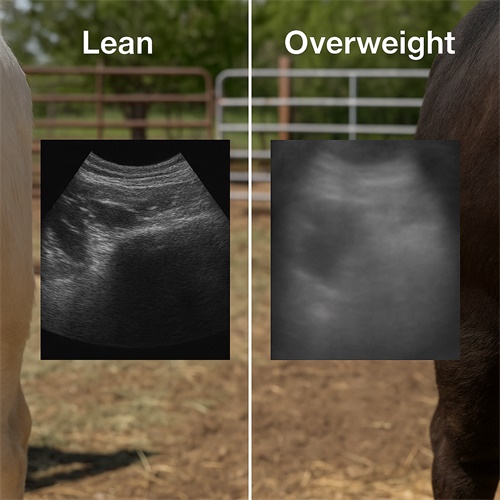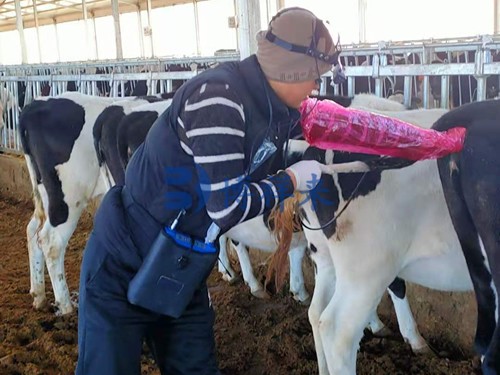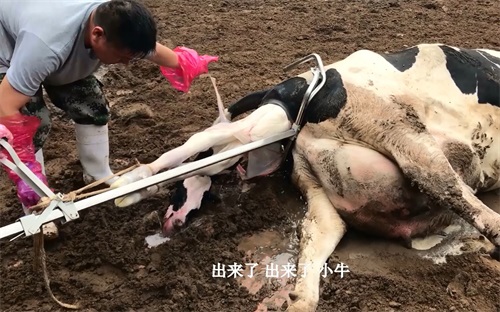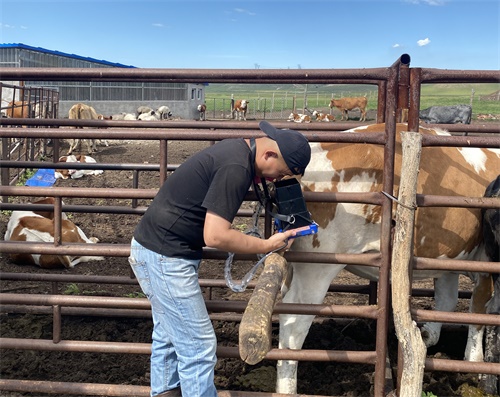In modern livestock operations and veterinary clinics, diagnostic imaging has evolved into an essential part of animal healthcare. Among the imaging technologies available, ultrasound stands out for its portability, real-time imaging capability, and lack of radiation exposure. Although not without limitations, ultrasound is an increasingly common tool used to improve diagnosis, monitor treatment progress, and support decision-making on farms and in veterinary practices.
In this article, we examine the key advantages and disadvantages of veterinary ultrasound in detail. The analysis focuses on its application in livestock medicine, but the principles apply broadly across animal species. We also draw upon credible international resources to support evidence-based insights.

Advantages of Veterinary Ultrasound
1.Non-Invasive and Safe for Animals
Ultrasound is a non-invasive technique that uses high-frequency sound waves to produce internal images of an animal’s organs, soft tissues, and vessels. Unlike radiography (X-rays), ultrasound does not expose animals or humans to ionizing radiation, making it especially safe for frequent use.
This characteristic makes ultrasound ideal for reproductive monitoring in large animals. Veterinarians can examine fetal development in cows, sheep, and goats without any risk to the animal or fetus.
2.Real-Time Imaging for Immediate Diagnosis
One of ultrasound's most valuable attributes is its ability to display live images. This real-time capability allows veterinarians to assess organ function, blood flow, or fetal movement instantly. For example, when dealing with suspected uterine infections in cows, ultrasound can reveal accumulated fluid, uterine wall thickness, or foreign masses immediately.
In critical cases, such as internal bleeding or intestinal torsion in calves, the ability to diagnose on the spot can save lives and reduce treatment delays.
3.Cost-Effective Compared to Other Imaging Tools
When compared to other advanced imaging modalities like CT (Computed Tomography) or MRI (Magnetic Resonance Imaging), ultrasound equipment is more affordable and accessible. While MRI or CT can cost tens of thousands of dollars and require special facilities, veterinary ultrasound can be performed in the field using portable units. This practicality is crucial for livestock operators working in rural or resource-limited environments.
According to a report from Today’s Veterinary Practice, portable ultrasound machines are now widely adopted in large animal care due to their cost-efficiency and ease of transport [1].
4.Broad Range of Applications
Ultrasound is commonly used in the following areas:
Reproductive management: Checking pregnancy status, follicle size, or uterine health.
Musculoskeletal assessments: Diagnosing soft tissue injuries in working animals.
Abdominal imaging: Detecting conditions like peritonitis, liver disease, or intestinal blockages.
Cardiology: Evaluating heart function and valve health in animals with suspected cardiovascular issues.
Its versatility across these functions adds significant value to veterinary operations, reducing the need for multiple diagnostic tools.
5.Useful for Monitoring Treatment Progress
Ultrasound is not just diagnostic—it is a valuable tool in ongoing case management. For example, in cases of liver abscesses in beef cattle, veterinarians can monitor the lesion’s response to antibiotic therapy over time. This supports treatment optimization and helps reduce unnecessary culling or pharmaceutical overuse.
Limitations and Challenges of Veterinary Ultrasound
1.Operator Skill is Critical
While ultrasound offers real-time insights, it requires a skilled operator to interpret the images correctly. Artifacts—visual distortions caused by improper probe placement, poor contact, or gas interference—can lead to misdiagnosis. Unlike radiographs, which can be interpreted post-hoc, ultrasound interpretation must often happen in real time.
Veterinarians and technicians need thorough training to recognize subtle abnormalities and differentiate between normal anatomical structures and pathology.
2.Limited Penetration in Large or Obese Animals
Ultrasound waves do not penetrate air or dense tissue well. In large or obese animals, or those with excessive intestinal gas, the image quality can be compromised. This makes it less effective for deep abdominal evaluations in mature bulls or sows.
Gas-filled structures like the rumen or intestines often obscure deeper organs, limiting diagnostic utility. In such cases, alternative modalities like CT or endoscopy may be required.

3.Not Ideal for Bone or Lung Imaging
Due to the physical limitations of ultrasound, it is not effective for imaging bones or lungs. Bone reflects sound waves completely, and air in the lungs disrupts signal transmission. Therefore, for fractures, pneumonia, or lung abscesses, veterinarians must rely on X-rays or CT scans.
Understanding this limitation is crucial in choosing the right diagnostic pathway for each clinical presentation.
4.Equipment Maintenance and Power Requirements
Although portable ultrasound devices have improved significantly, they still require care and regular maintenance. Probe damage, calibration issues, or power instability can compromise the system’s performance. In field situations without reliable electricity or generator support, using ultrasound continuously can be challenging.
5.Initial Investment and Training Costs
Despite being cheaper than CT or MRI, ultrasound still requires a financial investment. A mid-range veterinary ultrasound unit may cost between $3,000 and $15,000, depending on features. Training costs and time also add to the initial setup burden for clinics or farm operations.
How to Maximize the Value of Ultrasound
To gain the most benefit from veterinary ultrasound, livestock operators and veterinarians should focus on the following:
Invest in operator training and ongoing skill development.
Choose the right type of ultrasound probe (e.g., convex, linear) based on anatomical depth.
Use ultrasound in combination with other diagnostic tools for a complete assessment.
Incorporate ultrasound findings into herd health and reproduction plans.
A study by the Journal of Dairy Science emphasizes how integrating ultrasound into routine fertility checks can improve reproductive efficiency and reduce days open in dairy cows[2].
Conclusion
Ultrasound is a powerful, practical tool in veterinary diagnostics—especially for livestock medicine. Its safety, versatility, and real-time imaging capabilities make it indispensable for reproductive exams, soft tissue diagnosis, and treatment monitoring. However, it requires skilled operation, has physical limitations, and depends on quality equipment and support systems.
Understanding both its strengths and its challenges allows veterinarians and farmers to apply ultrasound more effectively, improving animal health outcomes and practice efficiency.
Referenced Articles:
"Diagnostic Ultrasound in Food Animal Practice" — Today’s Veterinary Practice
https://todaysveterinarypractice.com/diagnostic-ultrasound-in-food-animal-practice/"Ultrasound Reproductive Management in Dairy Cattle" — Journal of Dairy Science
https://www.journalofdairyscience.org/article/S0022-0302(20)30487-7/fulltext"Veterinary Ultrasonography Basics" — Merck Veterinary Manual
https://www.merckvetmanual.com/clinical-pathology-and-procedures/diagnostic-imaging/veterinary-ultrasonography









